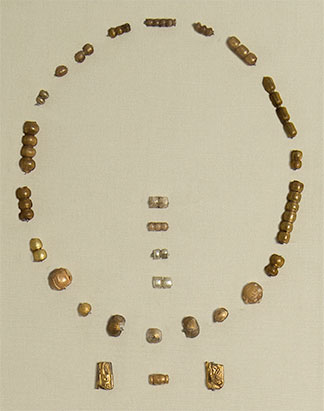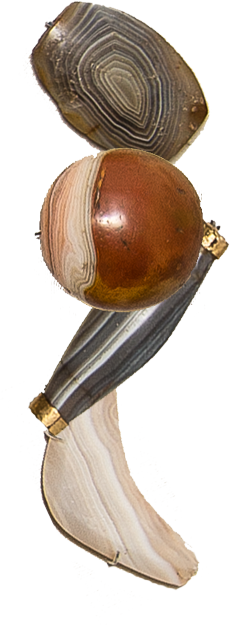Shadows of the Silk Road

In 2008, archaeologists from Yale University and Mongolia-working in the Gobi Desert at Baga Gazaryn Chuluu-excavated a 2,000-year-old tomb and discovered a collection of beads that had never been seen in that part of the world before. Many of the beads were made of stone and shell, but most were of carefully crafted glass of a kind not from ancient Mongolian workshops. Where did these beads come from?
James Lankton-one of the world's experts on ancient beads-saw the Gobi Desert beads on a visit to Yale the following year. Using the Bead Timeline, he noticed that many of the Gobi examples look like beads from early Greek and Roman workshops in the Mediterranean.
Detailed analysis of the chemical composition of the Gobi glass supported Lankton's suspicion-many of the beads were indeed from workshops in the Mediterranean. Others were from Iran and northern Pakistan. These beads had probably come to Mongolia by way of the early Afro-Eurasian trade routes of the Silk Road!
Many such beads from these same regions have also been found as far away as the Korean peninsula. Until this study, no one knew how the beads had arrived there. This Yale research shows that they probably came through Mongolia and that early Silk Road exchange stretched much farther than previously thought.



